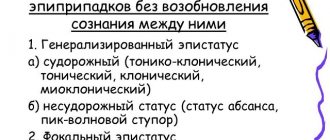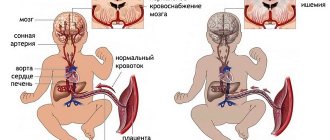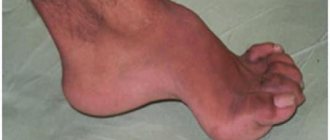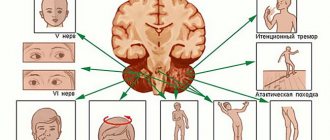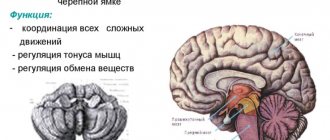What is increased anxiety?
Increased anxiety is a person’s high sensitivity to anxiety and stressful life situations. The condition is more often registered in children of preschool and high school age, as well as in women with psycho-emotional instability, concomitant neurological diseases, and mental childhood trauma.
A slight increase in a person’s stress level is considered as an individual personality trait, as a feature. If stress becomes intrusive and worsens the quality of life of the patient or others, then they speak of mental pathology. The prevalence of the disease among other affective disorders is 33%, 25% occurs in childhood.
general description
Generalized anxiety disorder (F41.1) is a mental disorder characterized by persistent anxiety about ordinary events in daily life and accompanied by recurrent restlessness, muscle tension, symptoms of agitation and suspiciousness of others.
Prevalence: 7% among adults. Women suffer 2 times more often than men. Generalized anxiety disorder most often appears in childhood or adolescence, but can also develop in adulthood.
Predisposing factors: genetic predisposition (cases of similar diseases in relatives), psychological trauma and stress, drug use and alcohol abuse.
Causes and risk factors
Anxiety disorder in a person is a tendency to excessive feelings of fear, anxiety, a sense of danger, accompanied by an obsessive anticipation of a threat, up to the development of panic attacks. If the anxiety is justified, the person will always tell its cause, but with pathology, the root cause is never determined. The most common causes of anxiety are:
- features and disorders of the nervous system of any origin, form;
- characteristics of the environment, family;
- increased psycho-emotional stress, stress factor;
- previously suffered stress and shock associated with a threat to life (the person could have witnessed the tragedy, he became aware of the incident);
- severe diseases of internal organs associated with persistent disturbance of water and electrolyte balance, brain hypoxia;
- somatic diseases;
- hormonal disbalance;
- alcoholism;
- melancholic personality type;
- very severe brain injuries, meningeal infections.
The main role occurs in early childhood. Anxiety may develop much later, decades later. The condition develops in an unfavorable environment for the child’s development and unstable relationships with parents. Some medications for the treatment of diabetes, certain thyroid diseases, and mental disorders (as a side effect) can trigger the pathological process.
Symptoms
Manifestations of neurosis cause a person to suffer. Change will definitely happen regardless of what a person thinks and feels. In some cases, specialist help is recommended. The symptoms of the disorder are very pronounced. If you notice such manifestations, do not ignore them.
Feeling tired
Anxiety disorder is always accompanied by fatigue and depression. This happens because a large amount of positive energy is lost. Internal devastation occurs, which subsequently affects the way we perceive the surrounding reality. The feeling of fatigue arises from the feeling of an endless struggle with oneself. Finding a way out of this situation is never easy. Sometimes there is a feeling of hopelessness, the inability to fix something, to influence your future.
Sleep disturbance
Being in a depressed state, a person often experiences certain difficulties falling asleep. It becomes simply impossible to relax; terrible thoughts begin to attack from different sides. Many people replay negative feelings and manifestations in their heads many times. They don’t understand that they are pulling the rug out from under their own feet. Sleep disturbances are the most common symptom that accompanies anxiety disorders. The individual often does not understand what is happening at all. It seems to him that the problem that has appeared in his life does not have a worthy solution.
Fears
Severe emotional depression is accompanied by various fears. Sometimes a person cannot explain to himself what exactly he is afraid of. When fears begin to overwhelm you with an alarming wave, it becomes difficult to overcome them and feel better. Negative manifestations can have too much of an impact on our daily reality. Sometimes fears are so strong that they turn into real panic attacks. It seems to the individual that he generally ceases to control his emotional state. Even the most ordinary phenomena begin to cause fear and persistent rejection. The nature of fear is too broad.
Diffidence
It is dictated precisely by an unstable emotional state. Self-doubt prevents you from even identifying your best aspirations, much less moving towards success. This is why personal aspirations remain undiscovered and unfulfilled. Anxiety disorder is a condition that does not go away without a trace, but leaves a serious imprint on a person’s perception of the surrounding reality. Subsequently, it becomes difficult to make decisions and move towards the desired result.
Distraction of attention
Being in an anxiety disorder, an individual is unable to sensibly assess his situation. Distraction of attention is caused by excessive concentration on one’s feelings. In this regard, people may not notice requests and signs of attention addressed to them. From the outside, an individual often makes an unpleasant, repulsive impression. It seems that he does not react to anything, does not show due respect to his relatives and work colleagues.
Constant pressure
Emotional distress creates a feeling of prolonged tension. This happens because you have to hold back too many negative emotions and constantly worry. It is impossible to solve serious problems and appear happy at the same time. An anxious state contributes to the appearance of isolation. This is because a person initially does not give himself the opportunity to relax and cannot understand what to do. Tension takes more energy than the most exhausting work accompanied by active actions.
Tearfulness, irritability
Anxious personality disorder is expressed as an inability to control emotions. The individual becomes excessively whiny, irritable, and is tormented by unpleasant feelings. All this is fully explained by emotional instability, aggressiveness, and wariness. In some cases, a person himself cannot explain what he is really experiencing. He is too immersed in negative experiences.
Physical symptoms
Neurosis cannot pass without leaving a trace on the body. If a person experiences this condition for a long time, characteristic symptoms begin to appear in the body. They cause a lot of anxiety and make you doubt your abilities. Physical manifestations can be expressed in the form of constant dizziness, vague abdominal pain, gastrointestinal upset, and tachycardia. Moreover, these physical symptoms do not indicate any serious pathologies. If you start checking your health, you will find that everything is fine.
Classification
The classification allows you to determine the nature of the disease, phobia, and patient management tactics. If childhood anxiety is more influenced by age-related chronologies, then in adults it is important to take into account the sphere of occurrence, the degree of impact on the psyche, severity, forms:
- By impact . Clinicians distinguish between mobilizing and relaxing anxiety. In the first case, the human body becomes excited and prepares for danger; in the second, the will is paralyzed and the person is unable to adequately assess the degree of danger.
- Sphere of emergence . Increased anxiety occurs depending on the environment. There are educational, social, interpersonal anxiety, and the problem of choice. Pathology often becomes the cause of low self-esteem and inadequate demands on others. The usual problem of choice in any place of stay can cause stress; there is no ability to control emotions.
- By expression . There is reduced anxiety (a person underestimates even a real potential threat), optimal (a person’s anxiety is accompanied by the mobilization of the body’s resources to resist danger), increased (excitability and fear arise for no reason, provoke panic, and in the event of a real danger, hysterics develop, paralyzing fear).
The condition requires special attention, since both conditions pose a threat not only to a person’s psycho-emotional health, but also to his life, if the danger to life is real.
What diseases can be hidden behind?
Diagnosis of the condition in children and adults is the field of activity of psychoneurologists, clinical psychologists, and psychiatrists. The final diagnosis is made on the basis of a physical examination, interview, tests, assessment of the anxiety scale, study of life and clinical history.
An increase in the level of stress and anxiety should be differentiated from depressive states, maladjustment reactions, the initial stages of schizophrenia, as well as from other psychiatric diseases caused by the development of phobias, obsessive thoughts and conditions.
How and why do signs of anxiety appear?
Anxiety is a normal state that triggers a self-preservation mechanism. Clinicians highlight not only psychological disturbances during stress, but also real physical sensations. Psychological symptoms of increased anxiety:
- frequent worries, premonitions, insecurity;
- sleep disturbance, decreased activity;
- unreasonable fear for loved ones, feelings of fear, mental heaviness;
- fear of a new environment;
- difficulty communicating with others;
- decreased performance, impaired concentration of thoughts - the entire field of thoughts is occupied by anxiety (patients constantly experience stress, are afraid to do unnecessary actions);
- inadequate self-criticism, tearfulness.
Other changes occur before arousal occurs. Physically, the disease is manifested by sweating, redness of the face and neck, increased breathing, pulse, heartbeat, a lump in the throat, bloating and loose stools. Outwardly, the person looks tense, nervous, clenches his fists, fiddles with buttons, clothes, his own fingers, and bites his nails.
What happens if you don't get treatment...
An increased level of anxiety without adequate treatment leads to serious mental disorders in the future, especially in patients at special risk. In children, over a long period of time, obsessive-compulsive neurosis, numerous phobias, and psychasthenic accentuation of character are formed.
Adolescents change behavioral responses. The disorder in adults disrupts the normal rhythm of life, obsessive states make adequate socialization difficult, and suicidal thoughts may appear. In the absence of treatment, patients lock themselves at home, deprive themselves of communication, plunge into deep depression, and sometimes become alcoholics.
The results of treatment, if medical recommendations are followed, are stable and last a long time. It is dangerous to leave symptoms unattended to avoid serious complications. The site contains many comments and answers to requests from patients with similar symptoms, and reviews of treatment. Articles will help you obtain information about the condition, but consultation with a specialist is also required. If the patient can cope with negative emotions and begins to control thoughts, then the degree of arousal will decrease significantly.
Anxiety disorder is a serious psychiatric illness that requires mandatory correction. Prevention consists of timely diagnosis, accurate diagnosis, adequate medication or psychotherapy, and early consultation with a doctor. Complications of a pathological condition always complicate treatment and are often irreversible.
Treating Anxiety Disorder Without Antidepressants
It used to be common practice to treat anxiety disorders without antidepressants. But the approach to treating anxiety disorders has changed in recent years. For another 25-30 years, the dominant assertion was that the only effective method of treating anxiety neurosis was psychotherapy (from psychoanalytic to hypnosis). Nowadays, a combination of psychotherapy and medications is most often used. But, of course, medications should not cause a pronounced sedative effect. After all, if a sleepy and lethargic patient sits at a psychotherapist’s appointment, then the effect of such a session will be very insignificant. With the development of the pharmacological industry and significant progress in it, modern anti-anxiety drugs do not have a pronounced sedative effect and, moreover, have proven effectiveness in the fight against anxiety disorders. Therefore, now it makes no sense to talk about the opposition of drug treatment and psychotherapy - they work much more effectively together.
If an anxious patient trusts the doctor, is sympathetic to the prescribed treatment, and uses a combination of medications and psychotherapy, the anxiety disorder will have no chance. And the person will be able to return to his old life and feel happy again!
We constantly detect plagiarism on our materials without providing a clickable follow link to them. In this case, without warning, we turn to Google DMCA , which leads to pessimization of the plagiarist. On the contrary, we welcome the popularization of our materials, but with the obligatory active follow link to this page psyhosoma.com/trevozhnoe-rasstrojstvo-i-ego-lechenie/ .


